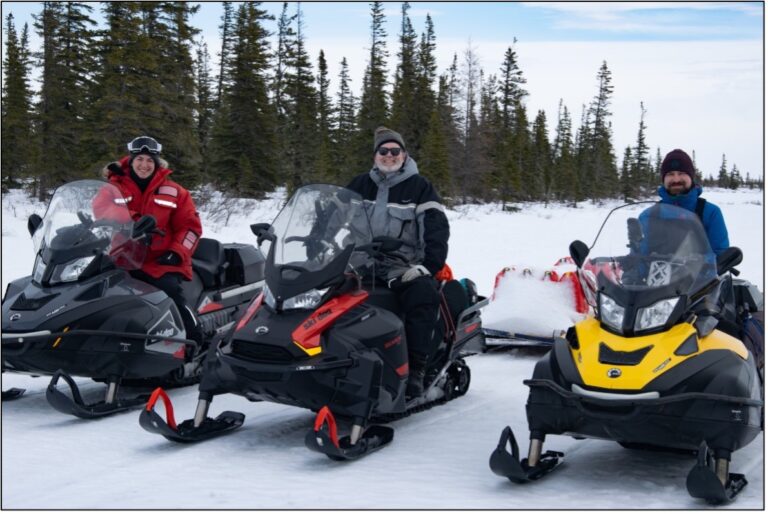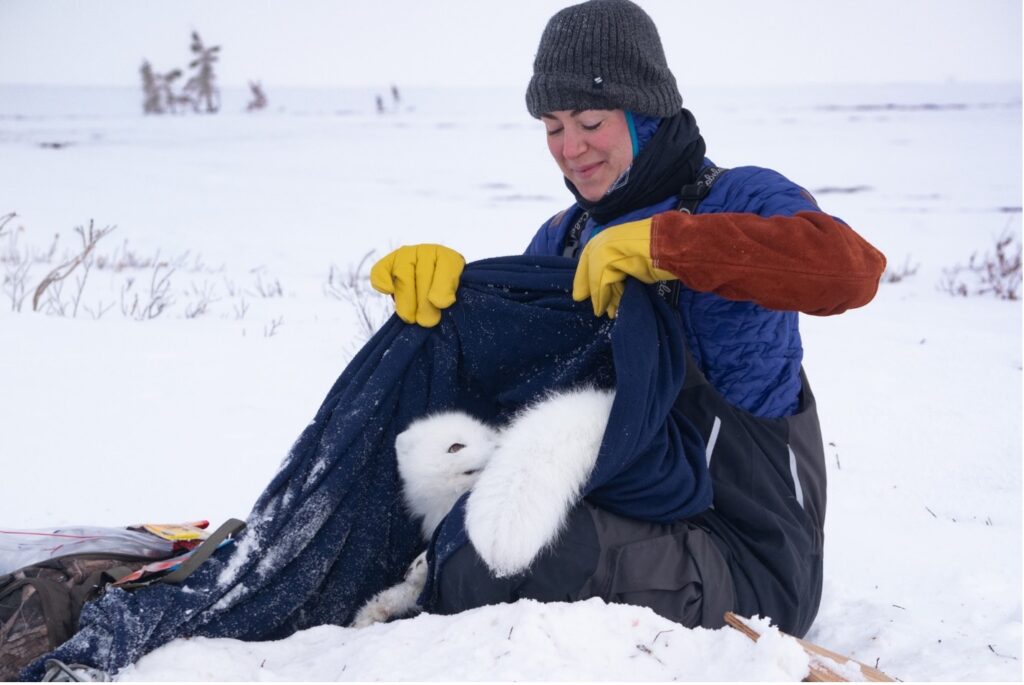Researcher feature:
holly gamblin

PhD student at the University of Manitoba,focus species is the Arctic fox
I received my B.Sc. and M.Sc. in Wildlife Conservation from Humboldt State University, California. Prior to joining the Churchill Fox Project in 2022, I worked as the Island Fox Project Manager for the non-profit organization Institute for Wildlife Studies where I led a variety of data collection efforts to monitor long-term population trends of the San Clemente Island fox. I also spent time living and working in a remote research station in Costa Rica, where I worked as the Sea Turtle Program Coordinator for Osa Conservation.
CURRENT RESEARCH
As a current member of the Churchill Fox Project, I am pursuing my PhD in Biological Sciences through the University of Manitoba. My thesis work will investigate the impacts of changing biomes on Arctic fox persistence, with a particular emphasis on the breeding season that occurs during the spring and summer months of April – August. The Greater Wapusk Ecosystem provides an incredible opportunity to study the changes that are occurring from climate change, as three important biomes intersect in this area: boreal forest, Arctic tundra, and the marine environment of the Hudson Bay.
Specifically, I am interested in investigating the following questions:
- How will the recent expansion of red foxes beyond the boreal forest and onto the tundra impact breeding Arctic foxes?
- Do red foxes and Arctic foxes compete for resources on the tundra during the summer breeding season?
- Arctic foxes are excellent hunters and scavengers on the sea ice, so what are the implications of the loss of sea ice and subsequent loss of marine carrion resources for Arctic foxes?

Field work on the Arctic tundra is unlike anything I’ve ever experienced. Capturing and collaring Arctic and red foxes on the tundra is an entirely different world than what I was used to in sunny California with the island foxes.
When we set out to collar Arctic and red foxes, we snowmobile around the tundra at all hours of the day. Every 6 hours we will snowmobile up to 50 km loops to monitor traps set around active fox dens for collaring efforts, so it is not uncommon for our team to be collaring an Arctic fox at 3 am in -20℃ weather!
On one of these night loops, I had the incredible opportunity to witness the northern lights in full force. There’s nothing quite like working up an Arctic fox with the backdrop of the northern lights!

at the cnsc
When I first visited the Churchill Northern Studies Center in 2022, I was blown away at how impressive the research station was. The facilities are instrumental to our research efforts, and the staff is always so helpful and supportive throughout our stay. Not only have they provided us with huge logistical support, but they’ve also provided funding for my research through the Northern Research Fund.
Words cannot express how nice it is to finish a long fox trapping loop out on the tundra and know that a warm shower and a hot cup of coffee are waiting back at the station!
